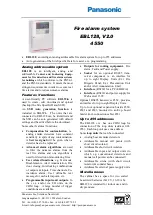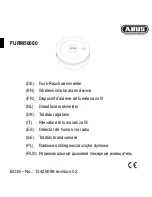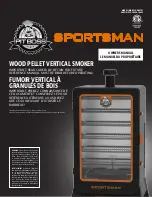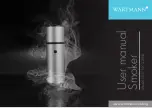
P/N 46-547 • REV • October 2012
1
Learn Mode Rate of Rise Heat Sensors
Installation Instructions
Introduction
This is the
Learn Mode Rate-of-Rise Heat Sensors
Installation Instructions.
The sensors (
Figure 1
) combine a
Chemetron heat detector and a learn mode wireless
transmitter in one unit. A built-in thermostat trips the transmitter
when the temperature at the sensor location reaches about
135°F (57°C) or 200°F (94°C), depending on the model
installed.
135°F models
60-460-95/NX-495, 60-460-95-LB
200°F models
60-460-01-95/NX-496
Figure 1. Sensor models
Since many fires grow rapidly in intensity causing a rapid
temperature increase, the thermostat also trips the transmitter
if the temperature rises 15°F (8°C) or more per minute.
All models can be powered by one 9-volt alkaline battery that
can last 12 to 18 months, or by one 9-volt lithium battery that
can last up to twice as long.
Note
: Battery life depends on how often the sensor transmits
signals, but is more dependent on the temperature of the
installation environment. Alkaline batteries self-discharge more
rapidly when used in high temperature environments.
When the battery voltage gets low, the sensor transmits a low
battery signal to the panel. The panel then activates sirens with
trouble beeps to notify the customer that the sensor battery
must be replaced
Caution:
SX-V Special panels must have software version 8.0
or later installed for correct response from the sensors. Do not
install Learn Mode Rate of Rise Heat sensors if the panel an
earlier software version. Contact Interlogix technical support at
888.437.3287 for assistance.
Installation
Use the following installation guidelines:
•
Heat sensors should be installed to provide property
protection. Reliance should not be placed on heat
detectors for life safety. Where life safety is involved,
smoke sensors must also be installed.
•
The sensors allow for normal temperature fluctuations,
however, ceiling temperatures should not exceed 100°F
(37°C) when installing 135°F models, or 150°F (66°C)
when installing 200°F models.
•
Mount the sensor in a central location of the area to be
protected, either on the ceiling or on a wall.
•
If mounting on a ceiling, the sensor must be at least 4 in.
(10 cm) away from any walls.
•
If mounting on a wall, the top of the sensor must be within
4 to 6 in. (10 to 15 cm) of the ceiling.
•
The UL maximum spacing allowance of the sensor is 50 x
50 ft. (15 x 15 m). Refer to the NFPA Standard 72 for
application requirements.





















